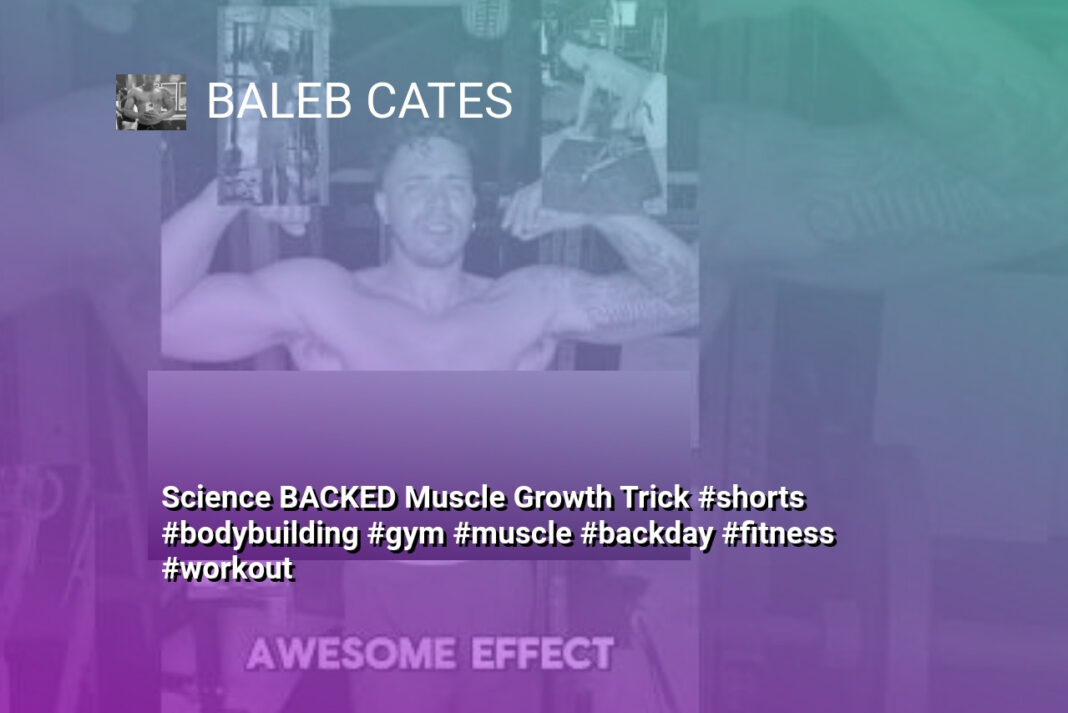The Bottom Line:
- As a non-scientist, I’ve learned that there’s some science behind the “dead hang” exercise. It involves hanging from a bar with a straight body and arms, which can provide a powerful stretch and effect after an intense back workout. The dead hang is performed when you’ve reached the point of failure in your pull-ups, where you can no longer pull yourself up. This weighted stretch in the “Failure” position can give you an awesome effect, as it’s the culmination of your max effort during the workout. I’d recommend trying a dead hang after your pull-up routine to experience the benefits for yourself.
The Importance of the Dead Hang
Unlocking the Potential of Gravity
The dead hang is a deceptively simple yet profoundly effective exercise that harnesses the power of gravity to enhance the benefits of your back workout. By allowing your body to fully relax and hang from the bar, you’re engaging in a targeted, high-intensity stretch that can have far-reaching consequences for your muscle recovery and growth.
Maximizing Muscle Tension and Elasticity
During the dead hang, your back muscles are subjected to a prolonged, intense stretch that pushes them to their limits. This heightened tension triggers a cascade of physiological responses, including the activation of mechanoreceptors within the muscle fibers. These receptors send signals to the central nervous system, prompting the release of hormones and growth factors that are essential for muscle repair and adaptation.
Moreover, the dead hang helps to increase the elasticity of your back muscles, allowing them to store and release energy more efficiently. This improved elasticity can translate to enhanced power output and reduced risk of injury during your subsequent workouts, ultimately driving greater gains in strength and size.
Enhancing Blood Flow and Nutrient Delivery
As you hang from the bar, gravity works in your favor, pulling blood and other vital nutrients towards your back muscles. This increased blood flow helps to flush away metabolic waste products, such as lactic acid, that accumulate during your workout. At the same time, the influx of oxygen and essential nutrients provides the raw materials your muscles need to recover and rebuild, accelerating the post-workout recovery process.
By incorporating the dead hang into your post-workout routine, you’re not only maximizing the immediate benefits of your back training but also setting the stage for long-term muscle growth and development. This simple yet powerful exercise is a testament to the profound impact that gravity can have on our physical well-being, and its inclusion in your workout regimen can be a game-changer in your pursuit of a stronger, more resilient back.
The Science Behind the Dead Hang
The Physiological Benefits of the Dead Hang
The dead hang, a simple yet powerful exercise, offers a multitude of physiological benefits that can enhance the effectiveness of your back workouts. By understanding the science behind this exercise, you can leverage its potent effects to maximize your training results.
Decompression and Spinal Alignment
During a dead hang, the body’s weight is evenly distributed along the spine, allowing for natural decompression and realignment. This process helps to alleviate pressure on the vertebrae, discs, and surrounding muscles, promoting better posture and reducing the risk of back pain. By allowing the spine to decompress, the dead hang can also improve blood flow and nutrient delivery to the spinal structures, aiding in the recovery and regeneration of the back muscles.
Muscle Activation and Tension
The dead hang requires the activation of various muscle groups, including the lats, biceps, and forearms. As the body hangs from the bar, these muscles must work to maintain the body’s position and resist the pull of gravity. This sustained muscle contraction leads to increased tension and the recruitment of additional motor units, which can contribute to enhanced muscle growth and strength development. Additionally, the dead hang helps to identify and address any muscular imbalances or weaknesses, allowing you to target specific areas for improvement.
The prolonged isometric contraction during the dead hang also triggers the release of growth hormones and other anabolic factors, which can further stimulate muscle hypertrophy and recovery. By incorporating the dead hang into your post-workout routine, you can capitalize on this hormonal response and optimize the benefits of your back training.
Furthermore, the dead hang challenges the grip strength, which is essential for many compound exercises targeting the back and upper body. Improving grip strength can lead to increased lifting capacity and better overall performance in your training regimen.
By understanding the science behind the dead hang, you can harness its powerful effects to enhance the recovery, muscle development, and overall effectiveness of your back workouts. Incorporating this simple yet impactful exercise into your training routine can help you achieve your fitness goals and take your back development to new heights.
Achieving Maximum Effort with the Dead Hang
Harnessing the Power of Muscular Exhaustion
The dead hang, performed after an intense back workout, leverages the state of muscular exhaustion to unlock a unique set of benefits. When your muscles have been pushed to their limits during the workout, they are in a primed state, ready to undergo a profound transformation. By engaging in a dead hang at this critical juncture, you can capitalize on this heightened state of muscular fatigue to achieve maximum results.
Maximizing Muscle Fiber Recruitment
The dead hang, executed in the aftermath of a grueling back session, forces your muscles to work against the full force of gravity. With your muscles already fatigued, this additional challenge compels them to recruit a greater number of muscle fibers to maintain the hang. This heightened fiber recruitment leads to a more comprehensive stimulation of the back musculature, amplifying the effects of the previous workout and driving accelerated muscle growth.
Enhancing Muscular Endurance and Resilience
By persisting through the discomfort and strain of the dead hang, you are pushing your muscles beyond their current limits. This process of controlled overload not only builds strength but also enhances muscular endurance and resilience. As your body adapts to the increased demands, it becomes better equipped to handle the rigors of future workouts, ultimately leading to a more robust and capable back musculature.
Unlocking the Powerful Effects of the Dead Hang
Maximizing Muscular Engagement: The Potency of the Dead Hang
The dead hang is a deceptively simple yet profoundly effective exercise that can unlock a myriad of benefits for those seeking to enhance their back workouts. By engaging in this powerful technique, individuals can tap into a heightened state of muscular activation, priming their bodies for optimal growth and recovery.
Unlocking the Tension: Harnessing the Isometric Advantage
The dead hang, when performed after an intense back workout, leverages the principles of isometric contraction. As the muscles have already been subjected to the rigors of the previous exercises, the dead hang allows them to maintain a sustained contraction without the need for additional movement. This isometric hold not only reinforces the mind-muscle connection but also helps to prolong the time under tension, a critical factor in driving muscle hypertrophy.
Maximizing the Stretch: Unlocking Untapped Potential
The dead hang also presents a unique opportunity to maximize the stretch on the back muscles. By allowing the body to fully hang from the bar, the lats, traps, and other key back muscles are placed under an intense, yet controlled, stretch. This heightened stretch not only enhances the overall range of motion but also helps to break down muscle fibers, setting the stage for subsequent growth and development.
The combination of isometric contraction and deep muscular stretch creates a powerful synergy that can amplify the effects of your back workouts. By incorporating the dead hang into your routine, you can expect to see a noticeable increase in muscle activation, improved range of motion, and a more robust recovery process – all of which contribute to the ultimate goal of building a stronger, more resilient back.
Incorporating the Dead Hang into Your Workout Routine
Maximizing Muscular Engagement with the Dead Hang
The dead hang is a simple yet powerful exercise that can be seamlessly incorporated into your post-workout routine, particularly after intense back workouts. By engaging in a dead hang, you’re subjecting your muscles to a prolonged, weighted stretch, which can have a profound impact on your overall muscle development and recovery.
Unlocking the Potential of the Dead Hang
The dead hang works by placing your muscles in a state of maximal contraction, as you’re essentially holding your bodyweight in a fixed position. This sustained tension helps to further fatigue the muscles, leading to increased muscle fiber recruitment and a heightened metabolic response. By capitalizing on this effect, you can optimize the benefits of your back workout and set the stage for enhanced muscle growth and recovery.
Enhancing Post-Workout Recovery
The dead hang also plays a crucial role in the recovery process after an intense back workout. By subjecting your muscles to a prolonged stretch, you’re promoting blood flow and nutrient delivery to the targeted areas, which can accelerate the repair and regeneration of muscle tissue. This, in turn, can lead to faster recovery times and a reduced risk of injury, allowing you to maintain a consistent and effective training regimen.





